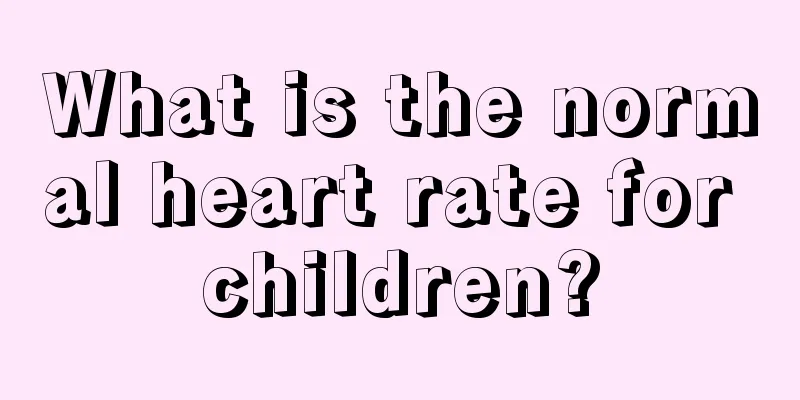What is the normal heart rate for children?

|
A child's normal heart rate plays a big role in judging whether a child is healthy. Mainly, we can tell what disease the child has from the child's heart rate. In fact, children's heart rate varies according to their physical constitution, so we recommend that everyone should have a certain understanding of the indicators of children's normal heart rate in life so that we can know whether our children are normal. Everyone's heart beats at a different speed. The number of heart beats is not only related to age and gender, but also closely related to posture, activity, mood, ambient temperature, etc. Therefore, a child's heart rate may vary within 24 hours. Generally speaking, the heart beats faster when exhaling and slower when inhaling, slower when lying down than when sitting, faster when exercising than when quiet, and faster when emotionally excited or crying than when calm and quiet. The younger you are, the faster your heart beats. To sum up, it can be considered that heart rate is an important indicator reflecting the health status of children. What is the normal heart rate for children of different ages? The average for newborns is 120 to 140 beats per minute. 120 times/minute at 1 year old, 110 times/minute at 3 years old, 100 times/minute at 5 years old, 90 times/minute at 7 years old, and can be reduced to 70 times/minute after 8 years old. When children have a fever, their heart rate often increases. For every 1°C increase in body temperature, the heart rate can increase by 10 to 15 beats per minute. If the heart rate increases significantly and cannot return to the normal range when the child is resting or sleeping, it often indicates the possibility of heart disease, especially when the child appears pale, refuses to eat, sweats or is irritable, or when the older child feels suffocated or has chest tightness, the child should be taken to the hospital for examination in time. Because each child's heart rate is different, some children's heart rate may be around 90 beats/minute, while some children's heart rate may be around 100 beats/minute, and so on. In short, it cannot be generalized. If your child has not suffered from various diseases recently, then his heart rate at this time (100 beats/minute) is very normal. If he is unwell or suffering from a certain disease, then his heart rate at this time is abnormal. Based on the article’s introduction to children’s normal heart rate, we recommend that everyone should remember the indicators of children’s normal heart rate in their lives. We all know from reading this article that the younger the newborn, the more times the heart rate beats, so for a one-year-old child, the heart rate is generally 120 to 140 beats per minute. |
<<: Foods that boost immunity in children
>>: Treatment and causes of gastroenteritis in children
Recommend
What should I do if my six-month-old baby has a high fever?
When a baby is sick and has a fever, it is the mo...
Which medicine is effective for children with anemia?
The child's face is pale and bloodless, which...
What to do if your five-month-old baby has a stuffy and runny nose
In daily life, babies often catch colds, which of...
What are the symptoms of common childhood diseases?
Everyone should be familiar with common pediatric...
Children's dental care tips
Dental care is very important during a child'...
What are the symptoms and clinical manifestations of tracheitis in children?
The weather nowadays is really changeable, especi...
Treatment for newborns who suddenly refuse to breastfeed
Many of our newborns suddenly stop eating milk. T...
What are the benefits of letting your baby sleep alone?
Nowadays, many parents are particularly doting on...
There is a soft bump on the baby's head
Parents hope that their newborn babies are health...
What to do if your child has dry stools
We all know that every child can absorb food bett...
Children's safety education
For children, as long as they can play with it, t...
What should I do if my child has rhinitis? These recipes are to be remembered
There are many ways to solve rhinitis, but if the...
Can mild thrush be treated with a vaccine?
Oral thrush is a common oral disease in babies. O...
What are the reasons for a two-year-old and three-month-old baby's height and weight being overweight?
The health of babies is a big issue that affects ...
What should I do if my baby’s face is scratched by other children?
It is normal for children to play with each other...









